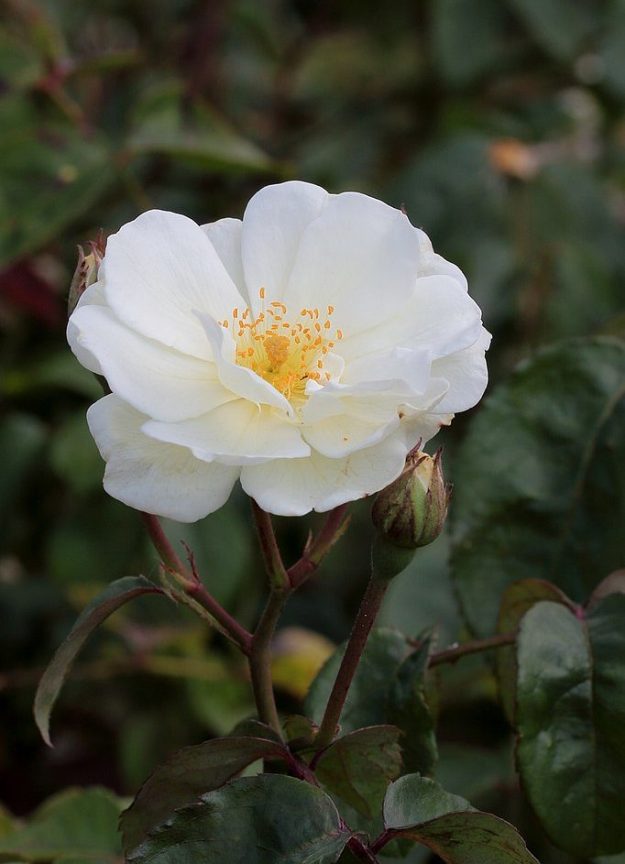
Rosa ‘Moonlight’ (Pemberton 1922)
photo: Dominicus Johannes Bergsma Wikimedia Commons
Choosing a rose for the garden can be a daunting task, as the growers’ catalogues tempt us with an ever expanding range of new and fashionable varieties. But some roses from the past have qualities that, even now, are hard to match, and are well worth growing.
Described by rose experts Roger Phillips and Martyn Rix as ‘some of the very best of all garden roses’ hybrid musk roses are a small group of repeat flowering shrub roses, developed in the early 20th century by the Reverend Joseph Hardwick Pemberton (1852 – 1926). Characterised by generous clusters of loosely double flowers in subtle shades of pink, apricot, white and pale yellow, they lend a romantic atmosphere to garden borders.
A fascination with roses seems to have run deep in the Pemberton family. Joseph Pemberton’s grandmother grew roses, as did his father, who regularly attended rose shows in search of new varieties for the family’s garden at the Round House at Havering-atte-Bower, close to Romford in Essex.
As a child, Pemberton would regularly accompany his father to rose shows held at Crystal Palace, and following his father’s death in 1874, began entering rose competitions. He enjoyed some success, firstly with help from the family’s gardener and then from various rose specialists he encountered at the shows. Later, with a reputation as one of England’s finest amateur rose exhibitors, Pemberton would travel to rose shows across the country accompanied by his sister Florence, also a rose enthusiast, with their prize-winning blooms.
The stars of the rose shows in the 1870s were hybrid perpetual roses like ‘La Reine’, ‘Générale Jacqueminot’ and ‘Madame Edouard Ory’. With their enormous double flowers these repeat flowering roses were some of the most popular in the Victorian garden.
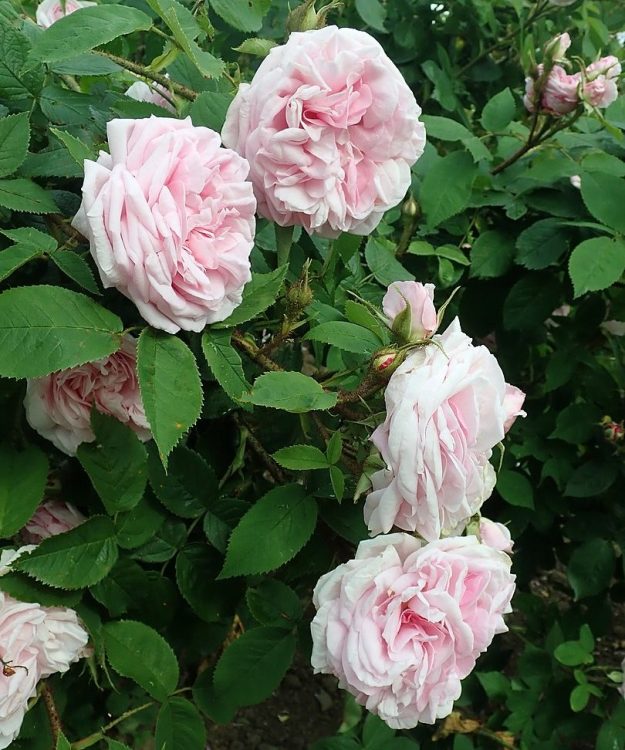
Rosa Mme. Edouard Ory (Robert 1854)
photo: Salicyna Wikimedia Commons

Rosa ‘La Reine’
photo: Stickpen Wikimedia Commons
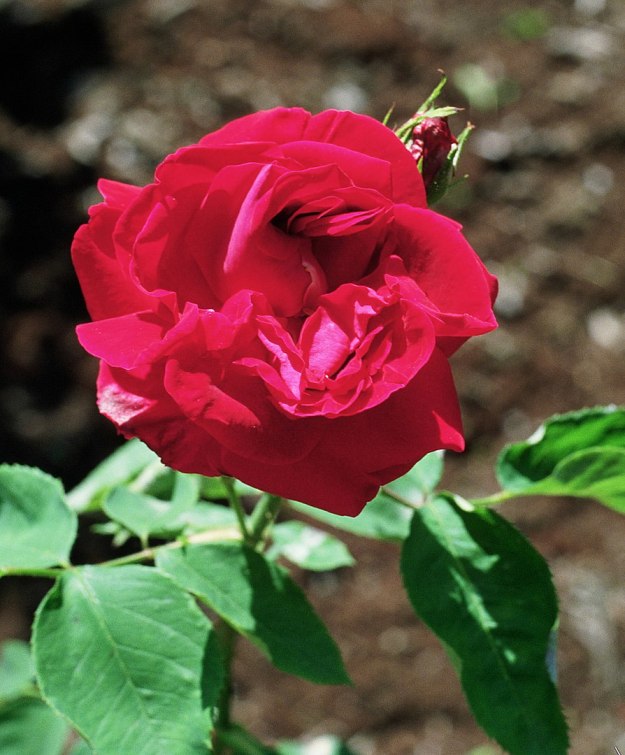
Rosa ‘Général Jacqueminot’
photo: A Barra Wikimedia Commons
Pemberton grew hybrid perpetual and hybrid tea roses like these for competitions, but he was nostalgic for the ‘old’ roses he remembered from his grandmother’s garden and regretted there was no appropriate category to display these roses at the shows. In the introduction to his book, Roses: Their History, Development and Cultivation (1908) Pemberton remarks that ‘the old-fashioned roses – like Cinderella were left at home’.
The ‘old’ roses Pemberton was referring to included varieties like ‘Maiden’s Blush, Aimée Vibert, Rosa Mundi, Red Provence, and Lucida’. Once, he took a box of these roses to a National Rose Society show in Kensington and ‘staged them, not for competition, labelled ” Grand- mother’s Roses’. The roses attracted ‘considerable attention’ from visitors who enjoyed re-discovering these ‘forgotten favourites’. One of the reasons ‘old’ roses had declined in popularity was that they flowered only once, finishing in July.
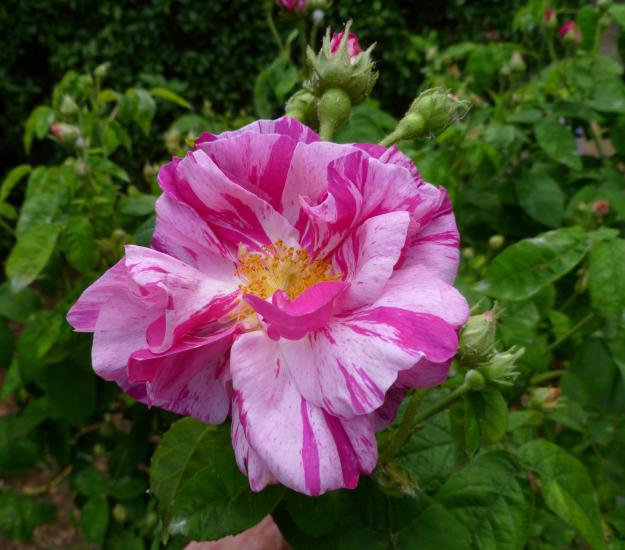
Rosa gallica ‘Versicolour’ or Rosa Mundi
photo: Sian Rees
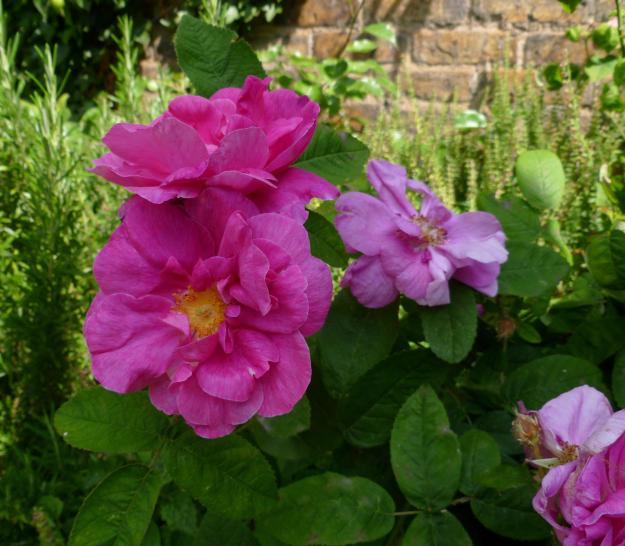
Rosa gallica var.officinalis (G) The Apothecary’s rose, Provins rose, red Damask or the red rose of Lancaster
photo: Sian Rees
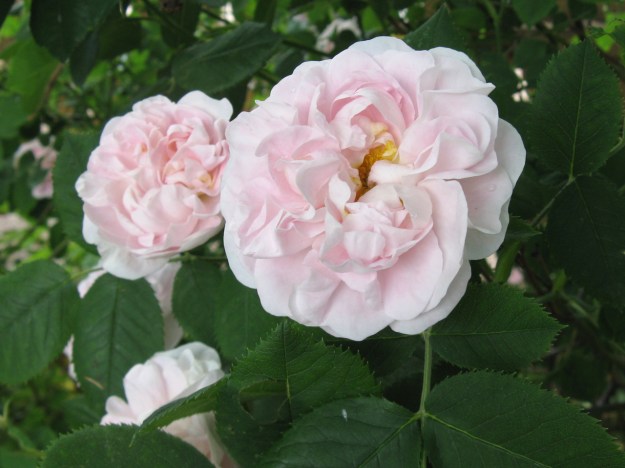
Rosa alba ‘Maiden’s Blush’
photo: Nadiatalent Wikimedia Commons
As well as showing roses, Pemberton had a keen interest in hybridisation, believing that amateur growers could make a significant contribution to raising new garden worthy varieties. By the late 1890s thousands of rose seedlings were produced annually by Pemberton using the garden and glasshouses at the Round House, with his sister Florence, gardener John Bentall and his wife Ann Bentall all involved in the project. Around the time of his retirement as an Anglican minister, he set up a business with Florence offering roses for sale to the public.
Most of the roses introduced by Pemberton that we know today were the result of a systematic programme of hybridisation using Rosa ‘Trier’, a hybrid multiflora rose introduced by Peter Lambert in 1904, crossed with various hybrid tea roses. ‘Trier’ shared some of the qualities possessed by the ‘old’ roses Pemberton admired, including large trusses of semi-double flowers and a good scent. Crucially, Trier was repeat flowering, giving Pemberton the best chance of producing roses with a similar form to the older varieties he loved, but that would repeat throughout the season.
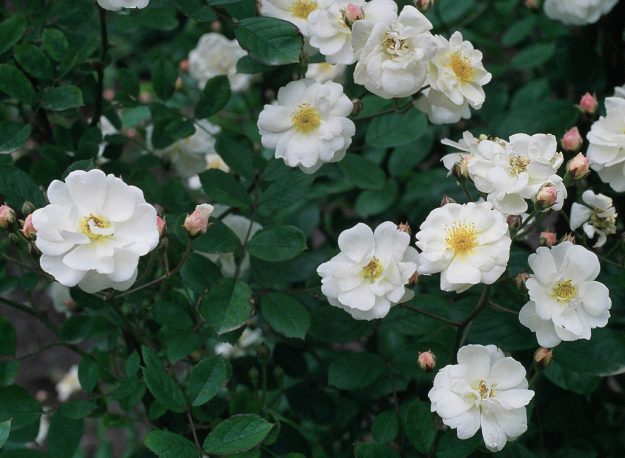
Rosa ‘Trier’ (Lambert 1904)
photo: A Barra Wikimedia Commons
His hybrids using ‘Trier’ produced some highly successful results. ‘Danae’ and ‘Daphne’ (1913) were some of the first of Pemberton’s hybrid musk roses to be introduced, followed by Rosa ‘Pax’ in 1918, named to celebrate the end of the first World War, and winner of a gold medal. ‘Cornelia’, ‘Penelope’ and ‘Felicia’ were introduced in the early 1920s and new roses were released after Pemberton’s death in 1926.
John and Ann Bentall who continued to manage the rose fields at Havering-atte-Bower, also kept up Pemberton’s hybridisation work and introduced ‘Autumn Delight’, ‘Buff Beauty’ and ‘Ballerina’ in the 1930s. It is thought their son Jack continued the rose nursery until the 1970s.
Pemberton’s hybrid musk roses have qualities that make them ideal for contemporary gardens. For naturalistic planting schemes, the open structure of the flowers attracts pollinators, and both their form and subtle range of colours make them easy to associate with other plants, including wild flowers. Their long flowering season is an advantage for those of us with small gardens, and most will tolerate some shade. Although some varieties are now scarce, many such as ‘Felicia’ and ‘Cornelia’ have remained popular and are widely available.
Collections of Pemberton’s hybrid musk roses can be seen at Dutton Hall in Lancashire and (by appointment) at the St Francis Hospice, Havering-atte-Bower, based at Pemberton’s former home and gardens. Rose breeders have continued the development of new hybrid musk roses, in particular Kordes in Germany, and Lens in Belgium.
Here follow some photographs of some of Pemberton’s hybrid musk roses and links to further reading below. Most of these images are supplied by visitors to rose gardens who have uploaded their work to Wikimedia Commons. Many thanks to them for their generosity in sharing their work.

Rosa ‘Prosperity’ (Pemberton 1919)
photo: Salicyna Wikimedia Commons
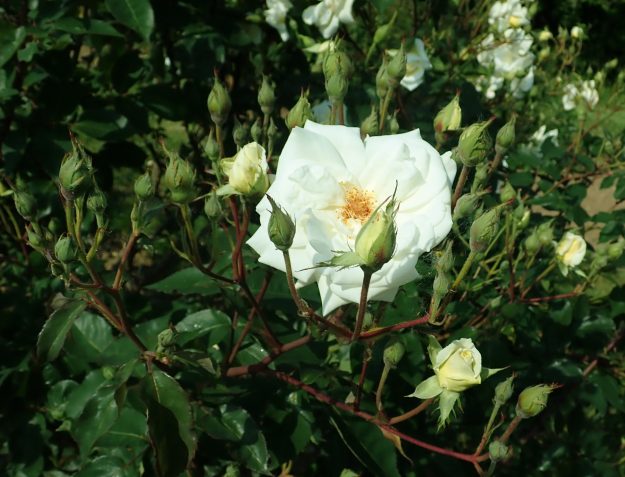
Rosa ‘Pax’ (Pemberton 1918)
photo: Salicyna Wikimedia Commons
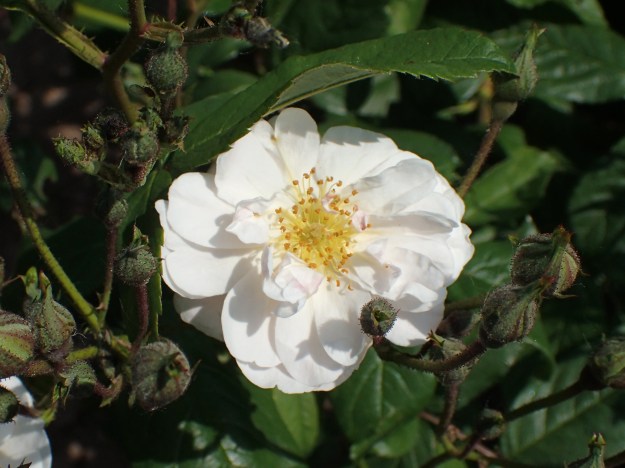
Rosa ‘Maid Marion’ (Pemberton 1930)
photo: Krzystof Ziarnek Wikimedia Commons
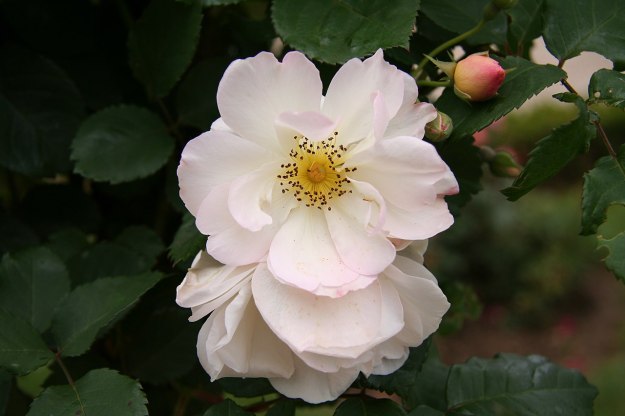
Rosa ‘Penelope’ (Pemberton 1924)
photo: Georges Seguin Wikimedia Commons

Rosa ‘Daphne’ (Pemberton 1913)
photo: Geolina 163 Wikimedia Commons

Rosa ‘Fortuna’ (Pemberton / Bentall before 1927)
photo: Salicyna Wikimedia Commons

Rosa ‘Clytemnestra’ (Pemberton 1915)
photo: Geolina 163 Wikimedia Commons

Rosa ‘Kathleen’ (Pemberton 1922)
photo: Meria z Geoian Wikimedia Commons
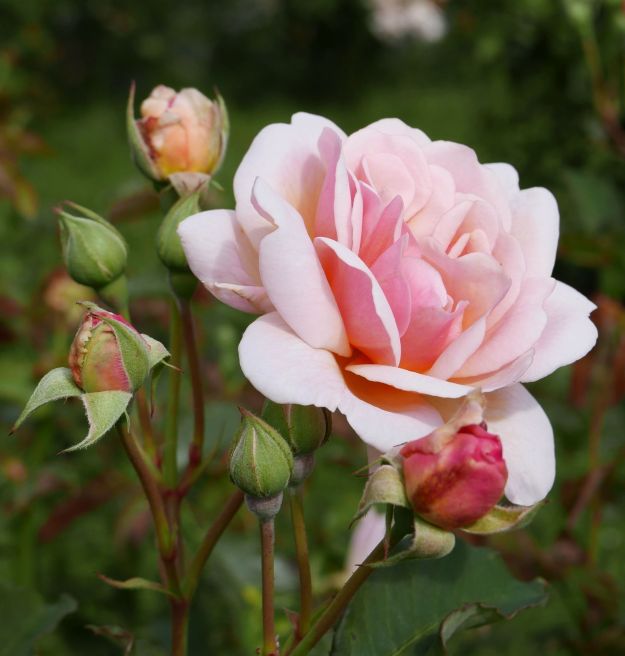
Rosa ‘Felicia’ (Pemberton 1928)
photo: Geolina 163 Wikimedia Commons
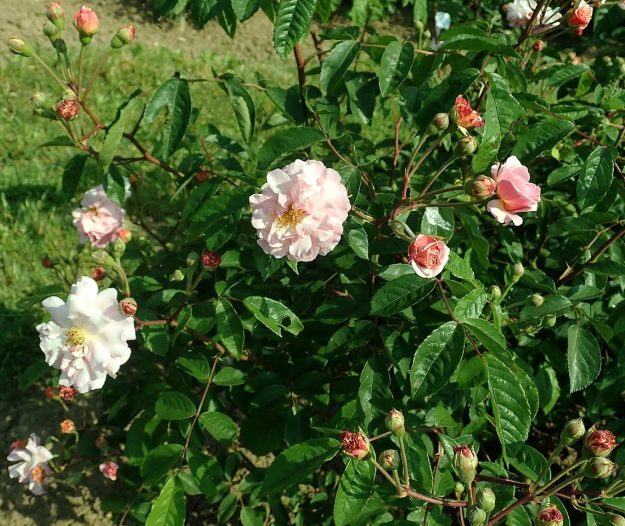
Rosa ‘Cornelia’ (Pemberton 1925)
photo: Salicyna Wikimedia Commons

Rosa ‘Nur Mahal’ (Pemberton 1923)
photo: Wilrooij Wikimedia Commons
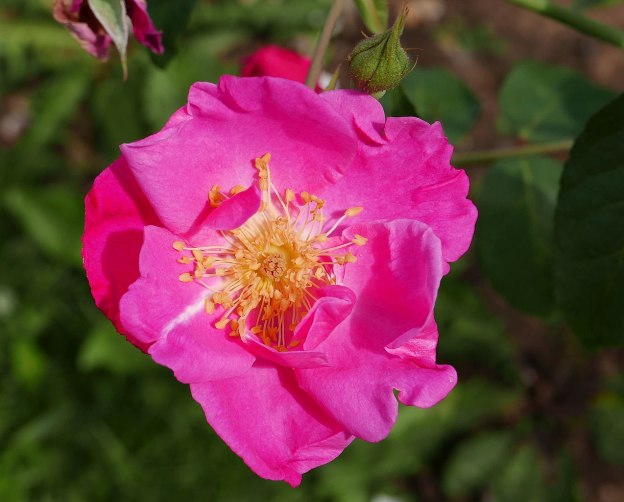
Rosa ‘Vanity’ (Pemberton 1920)
photo: Geolina 163 Wikimedia Commons

Rosa ‘Sammy’ (Pemberton 1921)
photo: Geolina 163 Wikimedia Commons
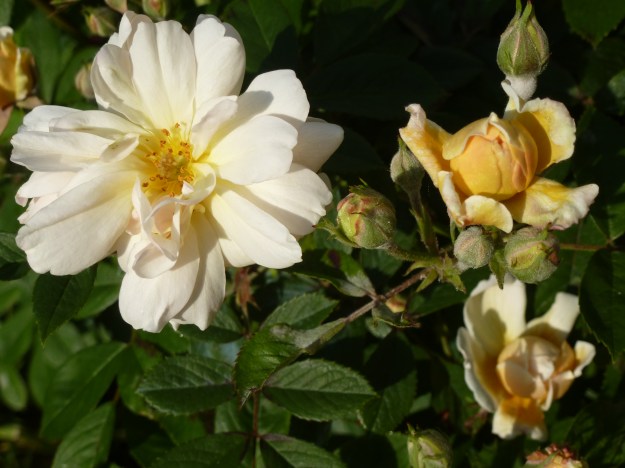
Rosa ‘Thisbe’ (Pemberton 1918)
photo Salix Wikimedia Commons
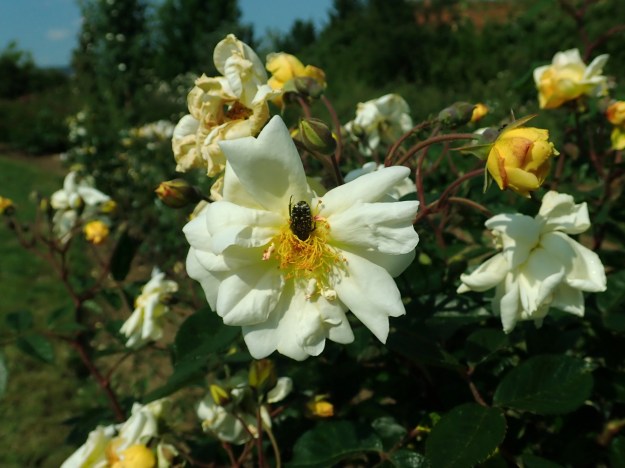
Rosa ‘Daybreak’ (Pemberton 1918)
photo: Salicyna Wikimedia Commons
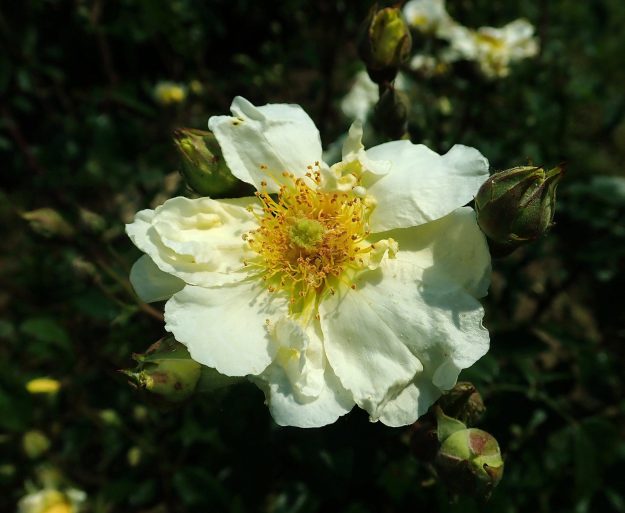
Rosa ‘Aurora’ (Pemberton 1923)
photo: Salicyna Wikimedia Commons

Rosa ‘Francesca’ (Pemberton 1922)
photo: Salicyna Wikimedia Commons

Rosa ‘Autumn Delight’ (Bentall 1933)
photo: Geolina 163 Wikimedia Commons
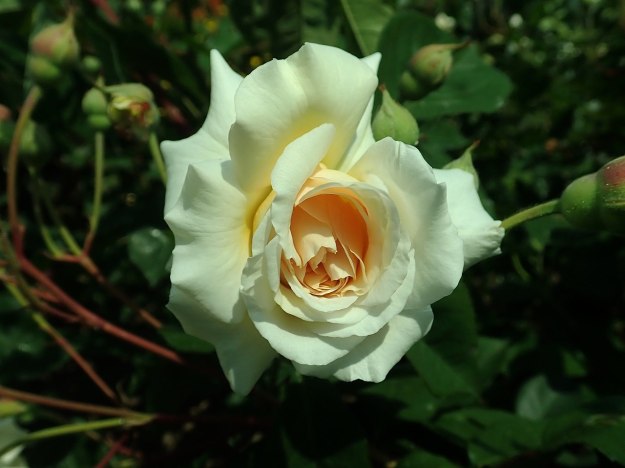
Rosa ‘Buff Beauty’ (A Bentall 1939)
photo: Salicyna Wikimedia Commons
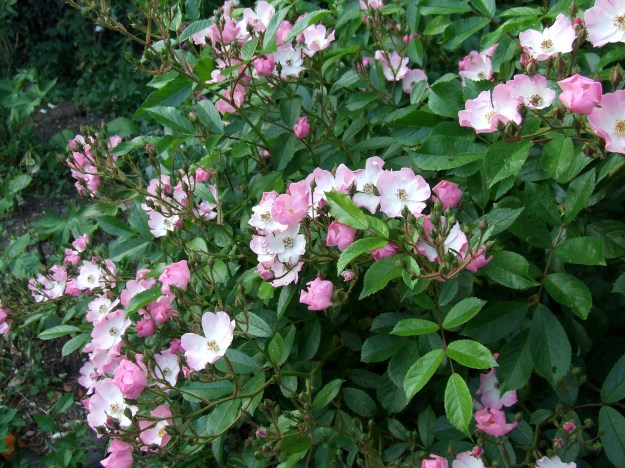
Rosa ‘Ballerina’ (Bentall 1937)
photo: Libby Norman Wikimedia Commons
Further reading:
Rev Joseph Hardwick Pemberton Wikipedia here
Essex Gardens Trust Rev J H Pemberton here
Plant Heritage National Collection Pemberton and Bentall’s Hybrid Musk Roses here
Pemberton Rose Garden at the St Francis Hospice here
The Ultimate Guide to Roses (Macmillan 2004) Roger Phillips & Martyn Rix
Rose suppliers: Trevor White Roses, Peter Beales Roses, David Austin Roses



















































































